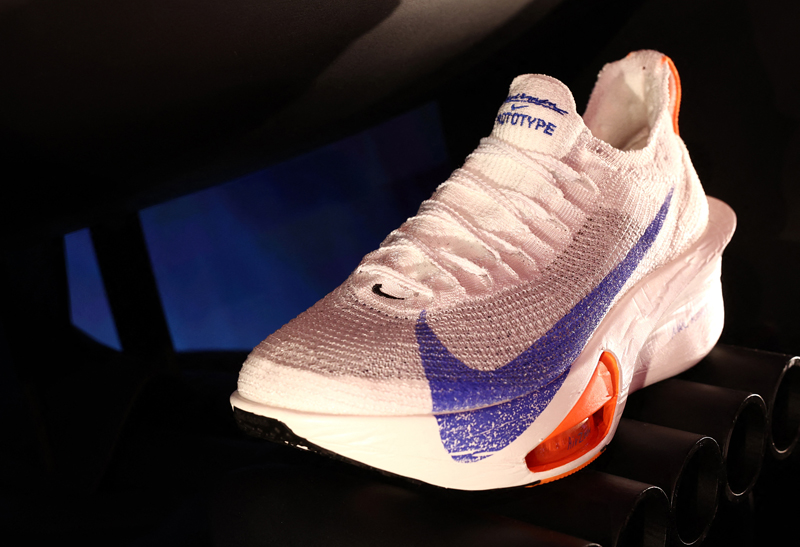You are viewing 1 of your 1 free articles. For unlimited access take a risk-free trial
Music and performance: please yourself for better training

SPB looks at research on how an athlete’s music choice during exercise affects performance
Over the past two decades or so, a large body of research has accumulated showing that music can have dramatic and positive effects on exercise performance, particularly when it comes to motivation and altering perceptions of fatigue(1-3). It’s hardly surprising then that music is considered almost ‘de rigour’ for athletes performing demanding training sessions, particularly during indoor sessions when strength training, on the rollers/turbo or on the treadmill – especially given that it is now well established that listening to music can divert attention away from feelings of tiredness and fatigue, increase positive mood and decrease negative mood, thereby increasing motivation to get stuck in. (NB: for a more in-depth discussion of the science underlying music and performance, readers are directed to this article by Professor Andy Lane)Music or video?
With the explosion of technology (for example smartphones and tablets capable of streaming and playing both music video), the options to keep athletes motivated have never been greater. One question that is frequently asked by athletes is ‘which is best to accompany a tough workout – listening to music or watching and listening to videos?’In an excellent study by Korean scientists, researchers examined the effects of different combinations of audio and video interventions on physical performance and rating of perceived effort (RPE – how hard a given exercise intensity feels)(4). To do this, 20 physically fit students performed a 12-minute cycling task on four separate occasions. The four tasks, were performed under identical conditions and in each one, they were asked to pedal as hard as possible throughout. However, each task varied in terms of what the cyclists could listen to and/or watch as follows: music only, video only, music and video or control (ie cycling without either music or video).
The second part of the study examined how music preference influenced physical performance, but instead used a running task (where subjects were asked to run as hard as possible). Seventy-five students completed the task on five occasions and in each task, the music was varied as follows:
- Music that each subject preferred and which was ranked as motivational (ie uplifting);
- Music that each subject preferred but which was ranked as non-motivational (ie calming);
- Music that each subject didn’t particularly prefer but which was still ranked as motivational;
- Music that each subject didn’t particularly prefer and which was ranked as non-motivational;
- No music.
Music preference and intense efforts
The notion that an athlete’s preferred music choice invariably produces the greatest exercise performance benefits has been supported by other studies(5). However, most of the research carried out has studied music choice in the context of steady-state endurance performance. Do the same guidelines apply to much more intense anaerobic-type exercise? A study carried out last year examined the effects of listening to preferred or non-preferred music on repeated sprint performance(6). Fourteen physically active males (ages 18-25 years) completed two separate visits to an exercise laboratory. During each trial, participants listened to either preferred or non-preferred music and completed 3 × 15-second Wingate Anaerobic Tests (WAnTs) separated by 2-minute active recovery periods. Anaerobic performance measures, heart rate, rate of perceived exertion (RPE), and motivation were analyzed.The key findings were that the athlete’s mean power outputs, anaerobic capacity and total work performed during the trial were not significantly different between preferred and non-preferred music conditions. The athletes’ mean heart rates were also not different between trials. However, what was very apparent was that the motivation to exercise was very significantly increased in the preferred music condition. Additionally, the rate of exertion perceived by the athletes was significantly lower during the preferred music condition (see figure 1).
Figure 1: Motivation and RPE during repeated sprint exercise


Although performance parameters were unchanged, motivation (bottom) significantly increased across the set of sprint intervals, while perceived exertion (top) decreased.
Music choice and strength exercise
Can the right choice of music reduced perceived exertion and increase motivation when strength training? Could it even enhance performance? Until earlier this year, no studies had ever investigated whether a preferred music genre can differentially affect strength production when compared to a non-preferred music genre. However, a study by researchers at the University of Sao Paulo in Brazil published a few months ago evaluated the influence of listening to preferred or non-preferred musical genres on maximal strength, strength-endurance testing, and on ratings of perceived exertion (RPE) during strength exercise(7).Twenty trained young men performed three different exercise trials on three separate occasions using three different listening conditions during strength trials:
- The athletes’ preferred music genre
- The athletes’ non-preferred music genre
- No music at all
As might be expected (from the other studies mentioned), the athletes reported lower perceived effort levels for the same work output when they listened to their preferred music. What was surprising however is that the preferred music also resulted in higher levels of maximal strength, and more repetitions of the lat-pulldown exercise than listening to non-preferred music or no music at all. These findings showing an increase in maximal strength production were the first of their kind; however, they tie in with an earlier study on resistance trained males, which found that, compared to non-referred music, preferred music increased the number of bench press reps that could be completed and the velocity of the bar movement during the first three reps(8).
Practical implications
Unlike some topics in sport performance, the conclusions for music choice are very clear. Choosing YOUR preferred music genre/tracks can significantly reduced the perceived effort during a workout or training session and increase motivation. These benefits will be appreciated by all athletes, but especially at this time of year when dark nights and inclement weather (not to mention the ongoing restrictions due to Covid-19) can sap enthusiasm and motivation. Athletes who are strength training or performing intense intervals may have even more to gain from preferred music – ie an actual increase in strength or work performed.For shared venues such as gyms (where music is often piped over a PA system), the use of good headphones (that are effective at blocking/reducing external sounds from entering the ears) and a music playing device (eg phone or MP3 player) providing decent sound quality is recommended. Athletes should also ensure that not only do they have their preferred music genres(s) loading onto their player, but also that there is a good selection of tracks/albums to choose from in order to maintain variety!
References
- J. Strength Cond. Res. 2018 doi: 10.1519/JSC.0000000000002981
- Percept. Mot. Skills. 2010;110:257–264
- J. Cardiopulm. Rehabil. Prev. 1990;10:312–316
- J Sports Sci Med. 2013 Sep 1;12(3):388-93
- Percept. Mot. Skills. 2010;110:257–264
- Sports (Basel). 2019 Jul 29;7(8):185
- Percept Mot Skills. 2020 Jul 28;31512520945084. doi: 10.1177/0031512520945084
- J Strength Cond Res. 2018 Dec 7. doi: 10.1519/JSC.0000000000002981
Related Files
Newsletter Sign Up
Testimonials
Dr. Alexandra Fandetti-Robin, Back & Body Chiropractic
Elspeth Cowell MSCh DpodM SRCh HCPC reg
William Hunter, Nuffield Health
Newsletter Sign Up
Coaches Testimonials
Dr. Alexandra Fandetti-Robin, Back & Body Chiropractic
Elspeth Cowell MSCh DpodM SRCh HCPC reg
William Hunter, Nuffield Health
Keep up with latest sports science research and apply it to maximize performance
Today you have the chance to join a group of athletes, and sports coaches/trainers who all have something special in common...
They use the latest research to improve performance for themselves and their clients - both athletes and sports teams - with help from global specialists in the fields of sports science, sports medicine and sports psychology.
They do this by reading Sports Performance Bulletin, an easy-to-digest but serious-minded journal dedicated to high performance sports. SPB offers a wealth of information and insight into the latest research, in an easily-accessible and understood format, along with a wealth of practical recommendations.
*includes 3 coaching manuals
Get Inspired
All the latest techniques and approaches
Sports Performance Bulletin helps dedicated endurance athletes improve their performance. Sense-checking the latest sports science research, and sourcing evidence and case studies to support findings, Sports Performance Bulletin turns proven insights into easily digestible practical advice. Supporting athletes, coaches and professionals who wish to ensure their guidance and programmes are kept right up to date and based on credible science.













